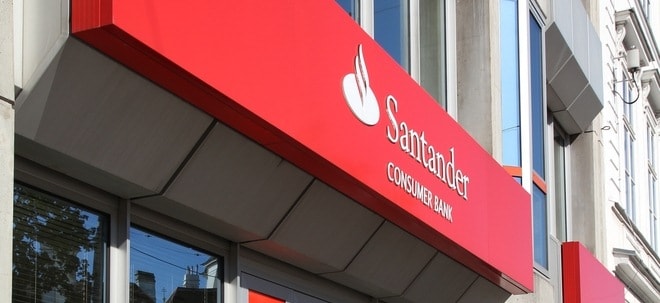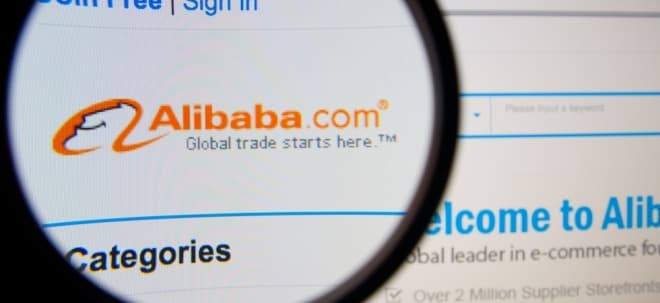Last Mile Delivery Market to Grow by USD 51.1 Billion from 2025-2029, Boosted by Global E-Commerce Growth, AI's Impact on Market Landscape - Technavio
NEW YORK, Feb. 5, 2025 /PRNewswire/ -- Report with market evolution powered by AI - The global last mile delivery market size is estimated to grow by USD 51.1 billion from 2025-2029, according to Technavio. The market is estimated to grow at a CAGR of 4.2% during the forecast period. Growing global e-commerce industry is driving market growth, with a trend towards strong focus on technological advances. However, operational challenges for last mile delivery companies poses a challenge. Key market players include Accenture PLC, CMA CGM SA Group, Deutsche Bahn AG, DHL Express Ltd., DSV AS, FarEye Technologies Inc., FedEx Corp., FM Logistic, Honeywell International Inc., Infosys Ltd., J B Hunt Transport Services Inc., Kuehne Nagel Management AG, Mara Labs Inc., Nippon Express Holdings Inc., Royal Mail Group Ltd., Schneider Electric SE, SNCF Group, United Parcel Service Inc., Werner Enterprises Inc., and XPO Inc..
Key insights into market evolution with AI-powered analysis. Explore trends, segmentation, and growth drivers- View Free Sample PDF
Last Mile Delivery Market Scope | |
Report Coverage | Details |
Base year | 2024 |
Historic period | 2019 - 2023 |
Forecast period | 2025-2029 |
Growth momentum & CAGR | Accelerate at a CAGR of 4.2% |
Market growth 2025-2029 | USD 51.1 billion |
Market structure | Fragmented |
YoY growth 2022-2023 (%) | 3.9 |
Regional analysis | APAC, North America, Europe, Middle East and Africa, and South America |
Performing market contribution | APAC at 51% |
Key countries | US, Germany, China, Canada, India, UK, Japan, South Korea, France, and Italy |
Key companies profiled | Accenture PLC, CMA CGM SA Group, Deutsche Bahn AG, DHL Express Ltd., DSV AS, FarEye Technologies Inc., FedEx Corp., FM Logistic, Honeywell International Inc., Infosys Ltd., J B Hunt Transport Services Inc., Kuehne Nagel Management AG, Mara Labs Inc., Nippon Express Holdings Inc., Royal Mail Group Ltd., Schneider Electric SE, SNCF Group, United Parcel Service Inc., Werner Enterprises Inc., and XPO Inc. |
The Last Mile Delivery market is experiencing significant trends as consumer expectations shift towards real-time tracking, on-demand services, and better customer experience. Urban congestion and sustainability considerations are driving the need for efficient logistics processes and innovative solutions like autonomous vehicles and drones. E-commerce growth and the rise of peer-to-peer marketplaces are increasing the importance of last mile delivery. Technology insights, such as route optimization and mobile applications, are streamlining the logistics process from distribution centers to the customer's doorstep. Brick-and-mortar retailers are adopting omnichannel retailing and cloud kitchens to meet changing consumer behavior. Logistics costs, including shipping and transportation, are a concern for both retailers and customers. Autonomous technology, like delivery robots and Scout, and non-autonomous technology, like ground delivery vehicles and skilled workers, are being used to reduce these costs. Poor infrastructure and logistics costs are challenges for the industry, but advancements in IT standards, system integration, and transportation hubs are helping to overcome these hurdles. The logistics market is expected to grow as freight transportation companies and supply chain activities adapt to meet the demands of the e-commerce industry and the need for easy returns and shipping options.
In 2024, the last mile delivery market witnessed a significant trend with the increasing use of advanced technology for real-time package tracking. Consumers gained control over their retail deliveries through user-friendly online tools, offering transparency and convenience. However, managing large or heavy packages presented a challenge. To tackle this issue, delivery providers introduced web and mobile applications for scheduling and managing such deliveries. These tools facilitated real-time tracking, electronic rescheduling, and notifications to customers via email, text, or voice calls in case of delays.
Request Sample of our comprehensive report now to stay ahead in the AI-driven market evolution!
Market Challenges• Last Mile Delivery Market: Overcoming Challenges in E-commerce and Retail The Last Mile Delivery market is a critical component of the retail and e-commerce industries, connecting distribution centers to customers' doorsteps. Consumer expectations for real-time tracking, on-demand services, and fast delivery times put pressure on companies to optimize their logistics processes. Urban congestion, sustainability considerations, and the need for better delivery services add complexity to the equation. Technology insights, such as autonomous vehicles, drones, and mobile applications, offer potential solutions. However, challenges remain, including poor infrastructure, logistics costs, and the postal address system. E-commerce industry growth and the increasing popularity of on-demand services drive the need for efficient route optimization and skilled workers. Retailers, from brick-and-mortar to omnichannel, face competition from e-commerce and food delivery platforms. Company costs, including shipping and transportation, are a significant concern. Autonomous technology, such as delivery robots and Scout, and non-autonomous technology, like ground delivery vehicles, are key players in the market. Trade activities, including trading of goods and services, freight transportation companies, and supply chain activities, all contribute to the Last Mile Delivery landscape. The use of warehouses, transportation hubs, and fulfillment services is essential for efficient and cost-effective operations. The Internet and online shopping have transformed consumer behavior, leading to increased demand for product delivery services. Expected delivery times, shipping options, tracking options, and easy returns are all crucial factors for customer satisfaction. The integration of IT standards and logistics market trends, such as cloud kitchens and food delivery platforms, further impact the Last Mile Delivery landscape. Financial costs, transportation infrastructure, and inventories are essential considerations for companies navigating the Last Mile Delivery market. The use of technology, skilled workers, and effective logistics processes can help mitigate these challenges and provide better services to customers.
• Last mile delivery operations present unique challenges for businesses, as they aim to provide transparency, efficiency, and profitability. While long-distance transportation costs are lower due to economies of scale, last mile delivery involves individual deliveries to numerous locations, leading to increased labor and fuel expenses. In this competitive market, pricing and delivery time are key differentiators. Customers seek cost-effective solutions from reliable service providers. Managing last mile delivery costs while maintaining customer satisfaction is a crucial business objective.
Discover how AI is revolutionizing market trends- Get your access now!
Segment OverviewThis last mile delivery market report extensively covers market segmentation by
- Service
- B2C
- B2B
- Application
- FMCG
- E-commerce
- Retails
- Others
- Geography
- APAC
- North America
- Europe
- Middle East And Africa
- South America
- Technology
- Autonomous
- Non-autonomous
1.1 B2C- The last mile delivery market refers to the transportation of parcels and goods from transportation hubs to consumers' homes in the B2C sector. With in e-commerce sales, the significance of last mile delivery has grown substantially. In contrast to B2B last mile delivery, B2C deliveries involve smaller and individual deliveries, posing challenges for operators due to low margins and the need for delivering to unique locations. However, the market has experienced growth, driven by the expansion of B2C services and the introduction of new services like next-day and same-day deliveries, real-time tracking, and easy returns. Vendors are leveraging big data and consumer analytics to optimize delivery routes, reduce fuel wastage, and enhance the consumer experience. Companies like DHL use real-time traffic, road, and weather information, as well as historical purchase data, to streamline operations and improve efficiency. These factors contribute to the expansion of the B2C segment, fueling the growth of the global last mile delivery market.
Download a Sample of our comprehensive report today to discover how AI-driven innovations are reshaping competitive dynamics
Research AnalysisLast Mile Delivery Market: Bridging the Gap between Retailers and Customers Last Mile Delivery (LMD) refers to the final leg of the supply chain, from the distribution center or transportation hub to the customer's doorstep. This critical stage of the logistics process is shaped by evolving consumer expectations, urban congestion, sustainability considerations, and technological advancements. Consumers demand real-time tracking, on-demand services, and seamless experiences. Retailers, from e-commerce giants to brick-and-mortar stores, are adapting by implementing technology insights, such as mobile applications, route optimization, and autonomous technology, to streamline the LMD process. Urban congestion poses challenges, leading to the exploration of alternative delivery methods like drones and autonomous vehicles. Sustainability considerations also influence the LMD landscape, with companies focusing on reducing carbon emissions and adopting green practices. Peer-to-peer marketplaces and cloud kitchens catering to food delivery platforms further expand the LMD market. The logistics process, from distribution centers to transportation hubs, warehouses, and delivery destinations, is undergoing significant transformation to meet the needs of tech-savvy, convenience-driven consumers. Company costs and shipping costs are crucial factors in the LMD market, with companies striving for efficient operations and competitive pricing to maintain a competitive edge. The LMD market continues to evolve, offering endless opportunities for innovation and growth.
Market Research OverviewThe Last Mile Delivery market refers to the final leg of the supply chain, which involves transporting goods from a transportation hub or distribution center to the customer's doorstep or retail store. Consumers expect fast, reliable, and convenient delivery services, leading to the rise of on-demand services and real-time tracking. Urban congestion and sustainability considerations are major challenges, driving the adoption of autonomous vehicles, drones, and non-autonomous technology. The logistics process involves distribution centers, warehouses, and delivery vehicles, with companies striving for route optimization and efficient use of transportation hubs and warehousing space. E-commerce, peer-to-peer marketplaces, and food delivery platforms are major drivers of last mile delivery growth. Technology insights, such as mobile applications and cloud kitchens, enable better delivery services and customer experience. The e-commerce industry's growth and increasing consumer behavior towards online shopping in product delivery services. However, poor infrastructure, logistics costs, and company costs, including shipping and handling fees, remain challenges. The logistics market includes freight transportation companies, supply chain activities, and fulfillment services, requiring skilled workers, IT standardization, and system integration. The use of autonomous delivery, such as delivery robots and Scout, is expected to revolutionize last mile delivery, reducing transport costs and increasing efficiency. Trade activities, both domestic and overseas, require effective last mile delivery solutions, with expected delivery times, shipping options, and tracking options being crucial factors for customers.
Table of Contents:1 Executive Summary
2 Market Landscape
3 Market Sizing
4 Historic Market Size
5 Five Forces Analysis
6 Market Segmentation
- Service
- B2C
- B2B
- Application
- FMCG
- E-commerce
- Retails
- Others
- Geography
- APAC
- North America
- Europe
- Middle East And Africa
- South America
- Technology
- Autonomous
- Non-autonomous
7 Customer Landscape
8 Geographic Landscape
9 Drivers, Challenges, and Trends
10 Company Landscape
11 Company Analysis
12 Appendix
Technavio is a leading global technology research and advisory company. Their research and analysis focuses on emerging market trends and provides actionable insights to help businesses identify market opportunities and develop effective strategies to optimize their market positions.
With over 500 specialized analysts, Technavio's report library consists of more than 17,000 reports and counting, covering 800 technologies, spanning across 50 countries. Their client base consists of enterprises of all sizes, including more than 100 Fortune 500 companies. This growing client base relies on Technavio's comprehensive coverage, extensive research, and actionable market insights to identify opportunities in existing and potential markets and assess their competitive positions within changing market scenarios.
ContactsTechnavio Research
Jesse Maida
Media & Marketing Executive
US: +1 844 364 1100
UK: +44 203 893 3200
Email: media@technavio.com
Website: www.technavio.com/
![]() View original content to download multimedia:https://www.prnewswire.com/news-releases/last-mile-delivery-market-to-grow-by-usd-51-1-billion-from-2025-2029--boosted-by-global-e-commerce-growth-ais-impact-on-market-landscape---technavio-302366198.html
View original content to download multimedia:https://www.prnewswire.com/news-releases/last-mile-delivery-market-to-grow-by-usd-51-1-billion-from-2025-2029--boosted-by-global-e-commerce-growth-ais-impact-on-market-landscape---technavio-302366198.html
SOURCE Technavio



